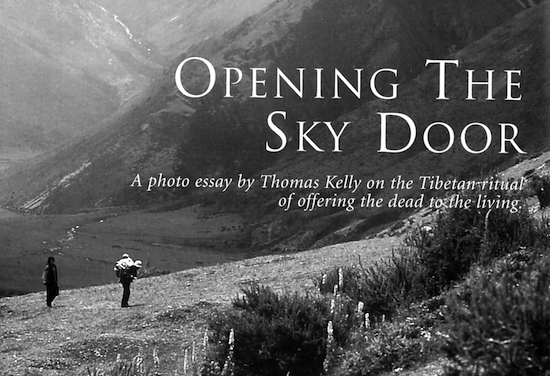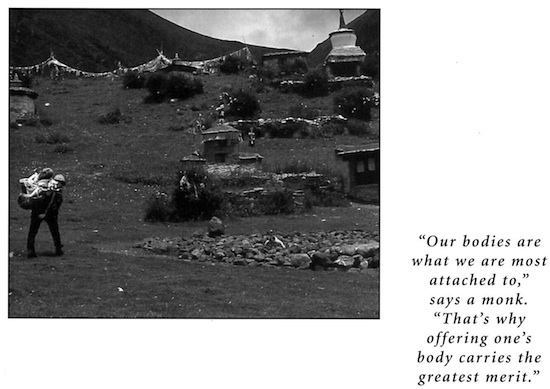
At the top of the ridge, on a platform of stones encircled by prayer flags, the tomden, or yoginbutcher, unwraps the body and slices it from head to toe, exposing the underlying flesh and bones. Drawn by the smoke from the juniper fire and the smell of fresh meat, huge vultures begin to gather on the surrounding rocks. His soul already transferred to celestial space, the dead man’s body is used to benefit other living beings—those who offer as well as those who consume. The majestic vultures, thought by Tibetans to be manifestations of flesh-eating dakinis, glide down from the high ridges and surrounding rocks and dance restlessly around the tomden and the unveiled corpse. “Shey, shey,” (“Eat, eat”), shouts the tomden. The birds descend, enveloping the dead man’s body in a frenzy of dark shifting wings.
Like a bodhisattva shaman, the tomden goes back in among the vultures and begins to dismember the skeleton, throwing arm and leg bones to the ravenous birds. Then, with a stone mallet, he pulverizes the remaining bones. Reciting mantras, he takes the skull and crushes it with a large rock. He mixes the brain and powdered bones with tsampa flour and again invites the birds to feast. Soon there is nothing left: only wisps of smoke from the juniper fire drifting across the barren stones. The birds fly heavily to the crest of the ridge to digest; then, slowly, they soar off into the heavens—black shapes fading against a pale, unending sky.



